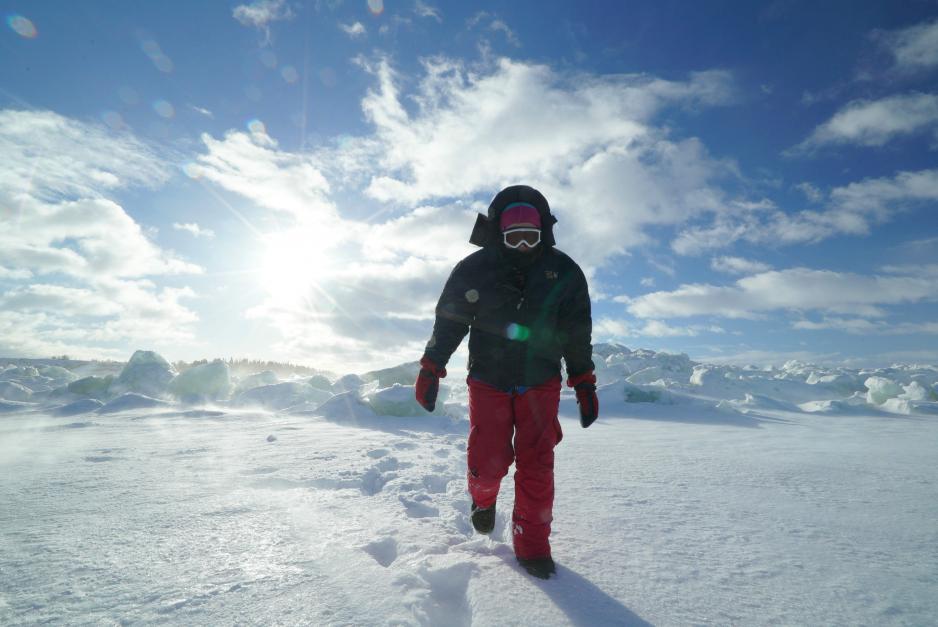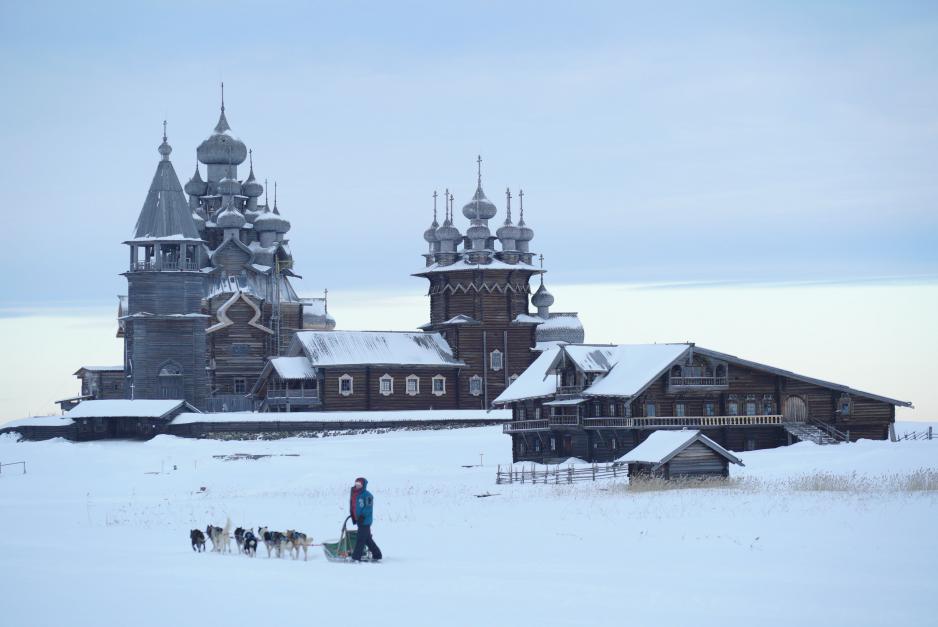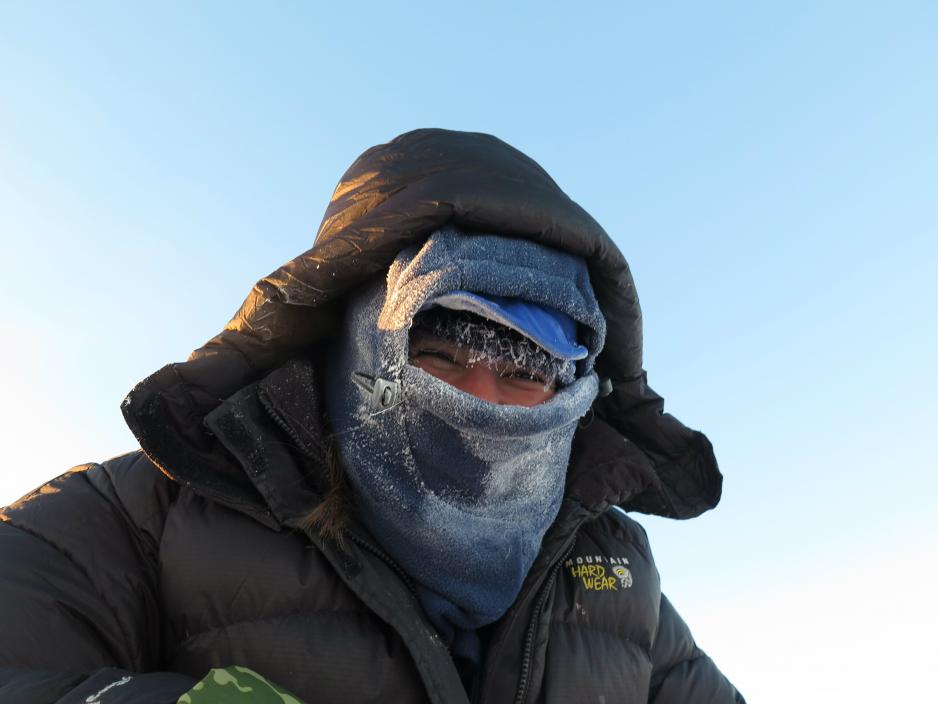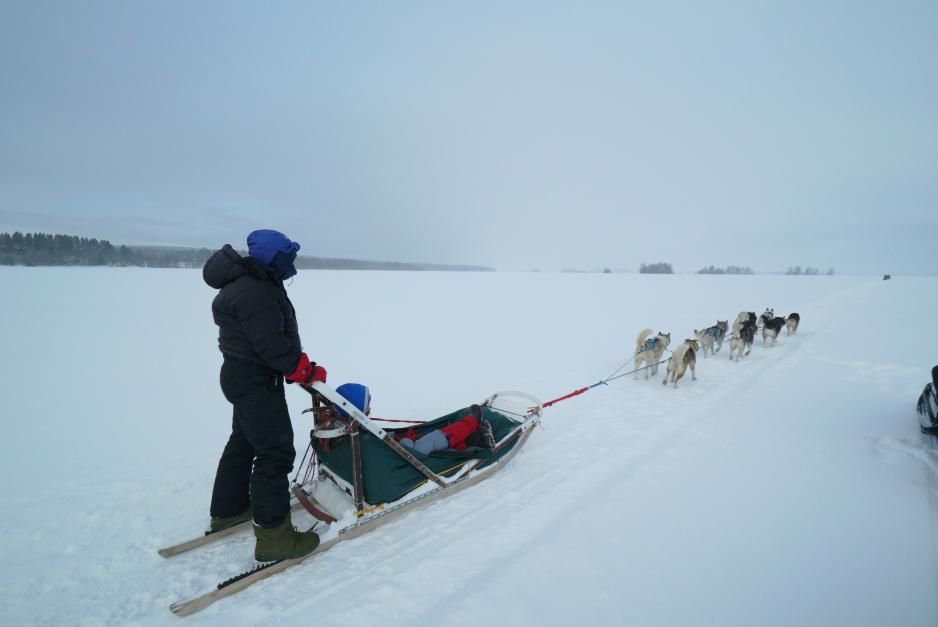Op-Ed: Feeling the Arctic as it is

Checking the ice-cracks at the bottom of the Andoma hill. (Photo: Gleb Semerenko)
It is when you have to find a nice place for a tent overnight in -42C, the words "dark", "cold" and "no infrastructure" get their meaning.
It is when you have to find a nice place for a tent overnight in -42C that the words "dark", "cold" and "no infrastructure" get their meaning.
Last February, I was a part of a 10-days expedition called "The Great Andoma: The Secret of the Three Oceans", organized by the the Arctic Training Center (Petrozavodsk) and led by distinguished polar explorer Victor Simonov in cooperation with Petrozavodsk State University. Participants: 16 humans, 32 dogs, 4 snowmobiles, 1 moto towing vehicle, ice, snow, wind.
The journey covered 600 kilometres in 10 days, having both its start and finish in Petrozavodsk, Republic of Karelia, Russia.
No limits
Similar to the main destination point of the expedition, the Andoma Hill, which constitutes the dividing line between the three lakes (Latcha, Onega, White) that run out into the three different seas (White, Baltis, Caspian) and the starting point of the seven rivers (a.o. Andoma, Koloda, Somba, Ukhta) and one of the two places on earth with rock outcrops that are 360-240 million years old, the range of results and learning points is only limited by one’s potential goals.
Dogs? Easy to manage.
During these 10 days and 600 kilometres of "white" adventure, I learned that it is not hard to manage dogs. It is much harder to manage yourself when the temperature range is between -42 C in a tent without oven and -2 C. Surprisingly, the former turned out to be better for the group as a whole.
What is more comfortable (-5 to -10 C) for humans, is less appropriate for the dogs who help you. They get warm, they get tired, they stop. However, the same is not true for the snowmobiles. When it is below -30 C, they (may) get cold, get broken, they stop. Surface water on the ice is not good for any of the participants. As the landscape, the temperature, the wind, the surface varied, so did the ‘leading’ role of one or another group of actors; human or non-human.
"Arctic conditions"
We used to refer to ‘Arctic conditions’ as something stable and fixed. However, even an insignificant difference in temperature or surface may lead to significant challenges for how work is done and distributed. And the secret of success in the Arctic lies exactly in this, in the necessity to balance the capacities of different group of actors – humans, dogs, equipment, and nature – within certain practical settings.
It means that one cannot study and experience the Arctic in one day as tomorrow, yesterday's Arctic may change.
Time to think
As a researcher with a passion for the Arctic, such or similar field studies are an absolute "must". Regardless of what kind of Arctic research issue one is working on, it is one thing to describe the context from your comfortable seat in a warm office, and a totally different thing to literally "feel it with your own butt."
It is when you have to find a nice place for a tent overnight in -42C that the words "dark", "cold" and "no infrastructure" get their meaning.
Furthermore, standing on a dogsled for 8 to 10 hours each day gives you a lot of time to think while purely "white" surroundings – nothing to draw your eye away – allows you to focus on your research problem.
The only challenge is the inability to write something down or even just take a picture to remember. Even if your hands are free for a moment, your fingers freeze even faster than your mobile dies. Next time I will consider using a voice recorder and allowing my academic whisperings to be heard by the dogs and the wind.
In this respect, international cooperation projects that allow researchers and students to take part in similar projects and experiencing the Arctic in a practical context may provide a good opportunity to facilitate and strengthen international research on Arctic.
Common goals
There were several common goals of the expedition. In addition, all participants had their own individual goals; mine was to collect data for a new article, which is now in progress.
- 2nd training run before the big expedition to the North Pole 2018 from Russia (test of equipment).
- Exchange of experiences between dog experts from different countries (Russia and China, though unfortunately Chinese experts faced documentation problems).
- Unique Arctic and dogsledding experience.
- Promotion of healthy lifestyle and sports among the younger generation (the image of the hero of our days) and the idea of the accessibility of the Arctic when you are motivated and well equipped (.i.e. I was "an ordinary Norwegian student" in addition to several "ordinary Russian students", all females).
- Development of inter-regional and international cooperation in the Arctic.
- Social and cultural development and exchange.

Once in a lifetime cultural experience: approaching Kizhi island and its astonishing 18th-century wooden churches "built without a single nail", as they say. (Photo: Gleb Semerenko)

If it was supposed to be a frozen selfie, I would say: "Selfie in -42C - easy to look impressive as it is only eyes one can see." (Photo: Valeria Borisova)

Dog sledging along the Onega lake coastline. (Photo: Gleb Semerenko)

